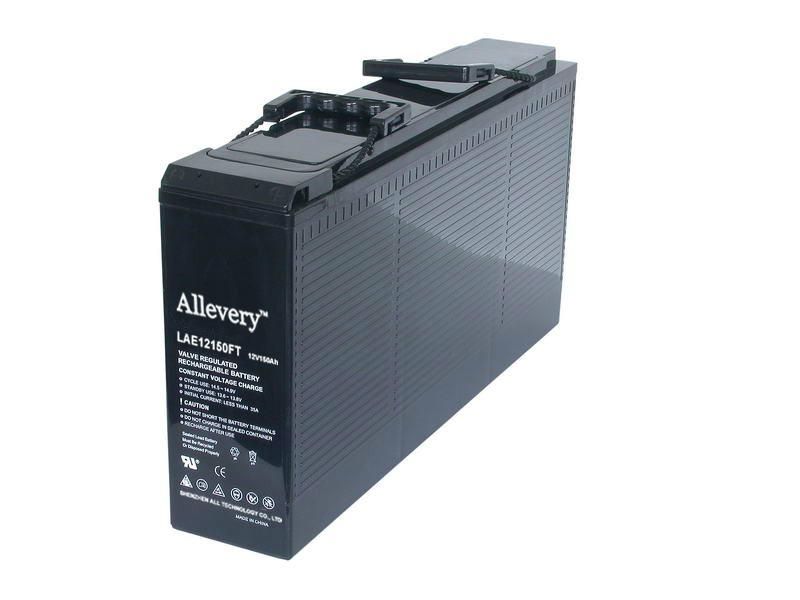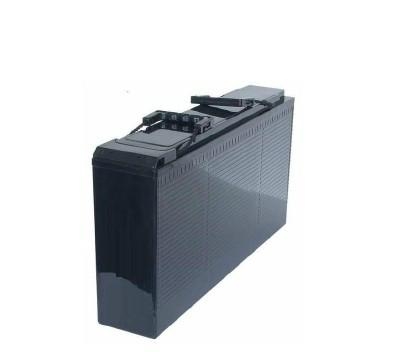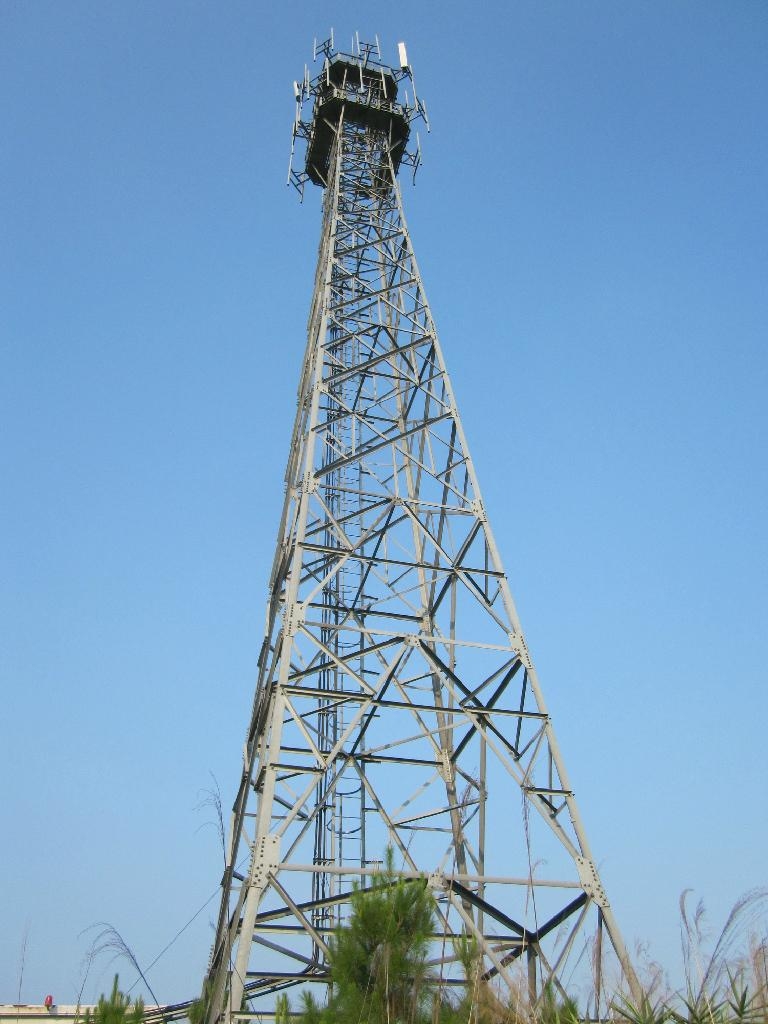Telecommunication system battery
Model No.︰12V150AH
Brand Name︰allevery.OEM
Country of Origin︰China
Unit Price︰US $ 187.5 / pc
Minimum Order︰1000 pc
Product Description
1. Battery Features
No maintenance: the battery during the whole life without water rehydration.
High reliability and long service life, special sealing structure and flame retardant case, does not produce in the course of electrolyte leakage defect will not fire.
Weight, volume, high energy, the internal resistance of small, high output power.
Small self-discharge, 20 ℃ under the monthly self-discharge rate is not greater than 2%.
Man charged the factory, no flow of electrolyte transport safety.
Can be used in any direction.
Wide temperature range: Standard Series battery (-40 ℃ ~ 50 ℃), high-temperature series (-40 ℃ ~ 70 ℃)
No charge balance, as resistance of individual cells, capacity, consistency of quality float voltage to ensure that the battery during use, no need to balance charge.
Resume of good performance: the battery discharge to 0 volts, short circuit for 30 days, can still charge to restore its capacity.
Solid copper terminal: easy to install connections, conductive ability.
Computer-aided design and computer control the main production process to ensure consistency of product performance and meet design standards.
Standard series design life in LFP Model FP model -5 -10 -18 models in long-life CFP 12 years OPZV / OPZS series over 20 years
4. Installation
(1) Check the battery before using the appearance of
(2) battery installation must be carried out by professionals.
(3) The battery is not sealed or in high temperature environments (recommended recycling temperature -5 ~ 35 ℃.)
(4) handling the battery should be installed even force, force office should be part of the battery shell, to avoid damage the pole.
(5) The only parallel in a multi-use batteries, press the battery polarity identification "+","-" priority, not less than the distance between the battery-15mm.
(6) in the battery connection process, please wear protective gloves, use the torque wrench and other metal tools, metal tools, please insulated packaging, absolutely avoid contact with metal tools at the same time to the battery positive and negative terminals.
(7) If you need to use batteries in parallel, generally no more than three (only) in parallel.
(8) and the external device before, so that the device is disconnected, and then the battery (s) of the positive cathode connected devices, battery (group) the negative extreme negative connection device, and fastening a good cable.
5. Notes
(1) non-professionals can not open the battery to avoid dangerous, if they inadvertently break the battery shell, exposed to sulfuric acid, rinse with plenty of water, please, please seek medical treatment when necessary.
(2) use multiple batteries, pay attention to the connection between the battery is correct, be careful not to short circuit.
(3) the use of the process should avoid strong vibration or mechanical damage
(4) the use of upper and lower battery container with air vents for heat dissipation.
(5) Do not let water pour into the battery, or immerse the battery.
(6) cleaning the battery as possible, please use the wet cloth to dry it, please do not use a dry cloth or duster, etc. Do not use chemical cleaning agents cleaning batteries.
(7) Do not mix with the tank capacity of different, new and different, a different battery manufacturers.
2. Common Characteristics
2.1 Discharge
2.1.1 Discharge termination voltage:
To ensure the safety and maximum battery life, battery discharge termination voltage and the size of the battery discharge current, discharge current, the battery terminal voltage can be lower, contrary discharge current, the battery terminal voltage is higher. (Table 1) under different electric rates recommended discharge termination voltage.
Discharge current discharge termination voltage: (VPC)
Less than 0.1CA 1.75
0.11-0.17CA 1.70
0.18-0.25CA 1.67
0.26-1CA 1.60
Greater than 1.1CA 1.30
2.1.2 Discharge capacity:
Battery discharge and the discharge capacity of the main current and environmental temperature
Battery capacity and discharge current relationship:
(Figure 1,2,3) for the FP, LFP, CFP model battery discharge rates at different conditions, the release of capacity, can be seen from the graph, the greater the discharge rate, the smaller capacity batteries can emit.
2.1.3 Battery Capacity and Environmental Temperature:
In the discharge current constant, ambient temperature, the battery discharge capacity, that the ambient temperature is low, the battery discharge capacity of less (Figure 4) for the relationship between battery capacity and temperature curves.
2.2 Charge
2.2.1 Charge Method
Charging method, in terms of battery is important, not the correct method of charging rechargeable battery will charge or less, affect battery performance and life.
Charging methods commonly used the following two.
A, constant charge current limit,
B, constant current charging
Constant charge current limit:
On VRLA batteries, the VRLA battery charging method is the best charging method. Control the charging voltage and ambient temperature and battery the way.
Backup battery: 2.23 ~ 2.30 / single cell, at 25 ℃,
Cycle with battery: 2.40 ~ 2.50 / single cell, at 25 ℃.
Note: Maximum start charge current to no more than 0.3CA,
Figure 5,6 for the battery charging curve, can be seen from the chart, at 25 ℃ when the battery charge voltage of 2.30V / single cell, the battery is fully charged, the charging current is reduced to 0.5 ~ 4mA/AH, to maintain not change.
When the battery charge is 2.4V / single cell, the battery is fully charged, the charge current reduced to 3 ~ 10MA/AH, remain unchanged.
Constant current charge:
The method used to charge the battery, note the battery is fully charged rechargeable power supply must be cut off immediately, otherwise it will result in battery charge, the expense of battery performance and life, with constant current charging, the charging current is generally not more than 0.1CA, when the charge The last time the battery discharge capacity reached 1.07 ~ 1.15 times the amount of time that the battery is fully charged.
2.2.2 Temperature effects on the battery charge voltage:
As the chemical reaction with the temperature increasing speed, slow down the decrease with temperature.
In order to prevent battery overcharging or less filling, when the battery temperature is not 15 ℃ ~ 35 ℃, the battery voltage is required for adjustment.
Adjustment methods are:
At 25 ℃ as the reference voltage adjustment coefficient: ± 3MV / ℃ single-cell l (battery backup); ± 4MV / ℃ single-cell l (cycle battery),
For example: use of a UPS battery backup 8 12V65AH do, summer, battery room temperature is 40 ℃, the charging voltage from 8 × 6 × 2.30 = 110.40 should be reduced to:
8 * 6 * [2.30-3 (40-25) / 1000] = 108.24V
In winter the temperature dropped to the battery room 10 ℃, the charge voltage should be raised to 110.40V:
8 * 6 * [2.30 +3 (25-10) / 1000] = 112.56V (Figure 7) for the relationship between battery voltage and temperature curves.
2.2.3 Charging time:
In terms of the backup battery, when battery-powered, the battery re-charge time required, usually not less than 24H. In terms of the cycle batteries, if you know the last time the initial discharge capacity and charge current can be calculated by the following formula ambient temperature is 25 ℃ charging time required.
A, when the discharge current is greater than 0.25CA when
Tch = Cdis / I + 3 ~ 5
B, when the discharge current is less than 0.25CA when
Tch = Cdis / I + 6 ~ 10
Note: Tch battery is fully charged the charging time required (H)
Cdis a battery discharge power (AH)
I maximum initial charge current (A)
Payment Terms︰ TT
Product Image


